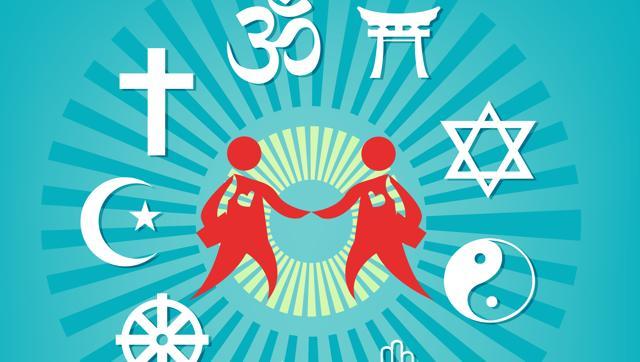In 2014, Ayushi* and Hamir* were working in Delhi when love blossomed between them. Ayushi comes from a conservative Hindu family of Haryana that doesn’t even allow her to marry someone by choice within the same caste, let alone have an interfaith marriage, whereas Hamir belongs to a conservative Shia family. Though it was also difficult for him to convince the family, it was easier than convincing the administration.
“In interfaith marriages, where the man belongs to the Muslim religion and woman is a Hindu, the administration becomes more susceptible and start seeing the relationship from love Jihad narrative.” Hamir said. He added, “For a man, it’s lenient to convince the family but for a Muslim man it’s like cessation to convince the state.” After two years of their relationship, they both decided to get married through court marriage aided by the Special Marriage Act (SMA) provisions, 1954.
The act enables a marriage between people of different faiths without conversion. As they wanted to do away with the procedure in a checklist of notices to parents or residential address (provision under section 5 of SMA) and wished to get married without telling their parents because of growing threats from Ayushi’s family to house arrest or might kill her.
With the help of Dhanak, an organisation that is working for promoting the right to choice in relationships, they filed a petition in Chandigarh High Court against the practice of sending notices being sent to residential addresses in Haryana. Due to this, as per the High Court directions, notices are not being sent for SMA applications in Haryana.
Also read: ‘You Don’t Behave Like A Muslim’: Being Muslim At The Workplace & Facing Islamophobia
Section 5 of the Special Marriage Act is the first obstacle to cross. It deals with the domicile notice of intended marriage between two parties and requires that notice of marriage can only be given in the district where either party has resided for the last 30 days.
After three years of a long battle in the court and facing much mental exhaustion, they could register their marriage under SMA but were still unable to tell the family of Ayushi. She shared that her family thinks “Muslim men keep four wives, and they ask Hindu woman to eat beef and to wear burkha“. All these conceptions of her family about Muslim men made it even more difficult for her to tell her family about their marriage. While talking about how media has impacted their relationship, Hamir said, “the way a Muslim is being portrayed in media channels horrified us and made it more difficult to convince Ayushi’s family.”
There is an immense unwillingness among interfaith couples to register their marriage under the civil law because the system is not even pro-civil marriage. Hamir shared, “Nobody talks about the SMA procedure in interfaith marriages. The advocate told me to get married either under the Hindu Marriage Act or Muslim marriage law by getting a conversion certificate, citing law and order issues. However, we were reluctant to convert.” The other reasons for not registering the marriage under SMA 1954 are all the hurdles of publishing the notice, lack of privacy and fear of attacks by vigilante groups.
The Origin of Special Marriage Act 1954 And Its Limitations.
The Special Marriage Act was passed in 1954 as part of a reform to personal laws. It’s a changed version of a similar law that existed since 1872. In 1872, Sir Henry Maine, a British jurist & legal historian, had introduced the Secular Marriage law in the form of the Special marriage bill, which allows any two citizens of India to adopt the proposed secular law over the personal laws.
Also read: Infographic: Common Instances Of Islamophobia In India
However, it faced vehement opposition by those who cried of how their “religion is in danger.” Later, it succumbed to the demand of forces and was restricted to only those who renounced their religion to marry under it. From time to time, there was an attempt by liberals to make this act more viable and open it for all Indians irrespective of religion. In the end, in 1954, a new law replaced the 1872 act. Under the new act any two Indians, whether living in India or outside India, following the same religion or different religion or no religion could solemnise their marriage under this secular act.
The purpose of the act in a country divided by caste & religion is to provide a safe space for youths who want to challenge this boundary, but the provisions of SMA, instead of facilitating Interfaith couples to marry it creat hurdles for them.
Section 5 of the SMA is the first obstacle to cross. It deals with the domicile notice of intended marriage between two parties and requires that notice of marriage only be given in the district where either party has resided for at least the last 30 days. Couples can’t register their marriage in their residing district because of continuous threats by family, society, and networks.
A Bajrang Dal member told Times of India– “We did not go hunting for the (Bareilly) couple; society brought them to us.” Times of India has reported that in the three years since, the extralegal scrutiny of interfaith couples by vigilante groups has grown stronger, powered by a network of informers — landlords, neighbours, temple managers, marriage registration officers, and even lawyers. In these circumstances of fearing violence and even the safety of their lives, they are forced to leave their residence and go to other cities/states in hiding for marriage. This is again very difficult for those couples who are not financially very stable.
The second hurdle is Section 6(2) of SMA, which requires a month’s notice to be put up in the public domain where the marriage is being solemnised. Moreover, in the case where either of the parties is not the permanent resident of the district where they move for marriage, Section 6(3) makes it compulsory to dispatch the notice at the parties’ permanent address, which makes couples’ safety more vulnerable. Section (7) gives authority to any Indian for any objection to the relationship.
Also read: Endogamous Love: On Love Jihad & Marriages In India
On receipt of the objection, the marriage officer has to discontinue the solemnisation of marriage & conduct an inquiry into a matter. Renu Mishra, executive director of the Association of Advocacy and Legal Initiatives said that couples are not interested in conversion, they just want to get married and like to choose a less complicated way of getting married. However, court marriage provisions are very complicated. “When we tell couples that the notices might be sent to their homes, they get scared and rarely return,” she further said. In India, couples generally don’t prefer court marriage; they go for it to get an escape from family and social pressure. But the court itself invites the family and society to intervene in their marriage.
The Special Marriage Act also fails to observe the right to equality before the law given under Article 14 of the Constitution, as not any religious marriage law is required to provide such notices to state or marriage officers or in the public domain on which any objection could be made.
Recently, Allahabad High Court ruled that the provision of publishing notice is a violation of privacy and asked to make it optional. Due to this provision, last year, interfaith couples in Kerala, found their information on social media (Whatsapp), including the name, address, age, occupation, photos, and signatures of the bride and groom, even all their personal details were out under the allegations of “Love Jihad.” The WhatsApp forward included a message: “These are love jihadis. We are the next scapegoats of these people. If you know these people, you should help them.”
All the information published under section (5) of the Marriage Act could be circulated throughout the country with only a click in an internet age and it’s a clear violation of privacy which is a fundamental right recognised by the Supreme Court of India in 2017. The Supreme Court asserted in 2017, “Privacy includes at its core the preservation of personal intimacies, the sanctity of family life, marriage, procreation, the home, and sexual orientation. Privacy safeguards individual autonomy and recognises the individual’s ability to control vital aspects of his or her life. Privacy protects heterogeneity and recognises the plurality and diversity of our culture.”
The act also fails to observe the right to equality before the law given under Article 14 of the Constitution, as not any religious marriage law is required to provide such notices to state or marriage officers or in the public domain on which any objection could be made. It is a question to ask why such notices are being published in the Special Marriage Act? Initially, these publications and objections in SMA were asked to be made on the reasoning of stop illegal bigamy. However, now it’s a method to harass interfaith couples in the name of ‘love- jihad’.
In 2017, Kerala high court emphasised that all interfaith marriages are not love jihad. The court said, “We are appalled to notice the recent trend in this State to sensationalise every case of inter-religious marriage as either ‘Love Jihad’ or ‘Ghar Wapsi’ even if there was platonic love between the spouses before.”

Also read: Challenging The Heteronormative Ideas Of Love
The Recent Love Jihad Trend Is Not Something New
Charu Gupta in her commentary Hindu women, Muslim Men: Love Jihad and conversion wrote that the recent trend of ‘love-jihad’ is similar to a campaign of alleged ‘abductions’ in the 1920s in North India. She said that in both campaigns, an image has been constructed of passive victimised Hindu woman at the hands of inscrutable Muslim men, and any possibility of women exercising their legitimate right to love and their right to choice is ignored.
It is important to protect the rights of interfaith couples and promote heterogeneity; the lack of privacy and safety in registering the marriage under the Special marriage act 1954 is forcing interfaith couples to look at less complicated ways, it includes either breaking their relationship or getting married after conversion. And now, the coming of the anti-conversion law will leave no ways for interfaith couples to live together. The government needs to amend the Special Marriage act and provide a prudent space for interfaith couples amid the growing propaganda in the name of ‘love-jihad’.
Shreeti Shubham is an Ideosync-UNESCO Information Fellow, She is focusing on intersectional feminism & digital rights. As part of the fellowship, She worked on the project “Democratic Love” which’s about Women’s right to choose, Special Marriage Act & Interfaith marriages. She has done Master in Media & Governance from Jamia Millia Islamia University.
All the names & some details have been changed to protect the identities of the couple.
(This is made as part of the Ideosync- UNESCO Information Fellowship, 2020 Special Cohort on Intersectional Feminism and Digital Rights)
Featured Image Source: Sabrang India





I am in a Interfaith relationship I will never ask her to convert, someone who truly loves a person will accept her/him for what she/ he is. It’s bad that SMA don’t work in favour of runaway interfaith couples. Such unions have power to change India for better and are necessary for complete integration of society.